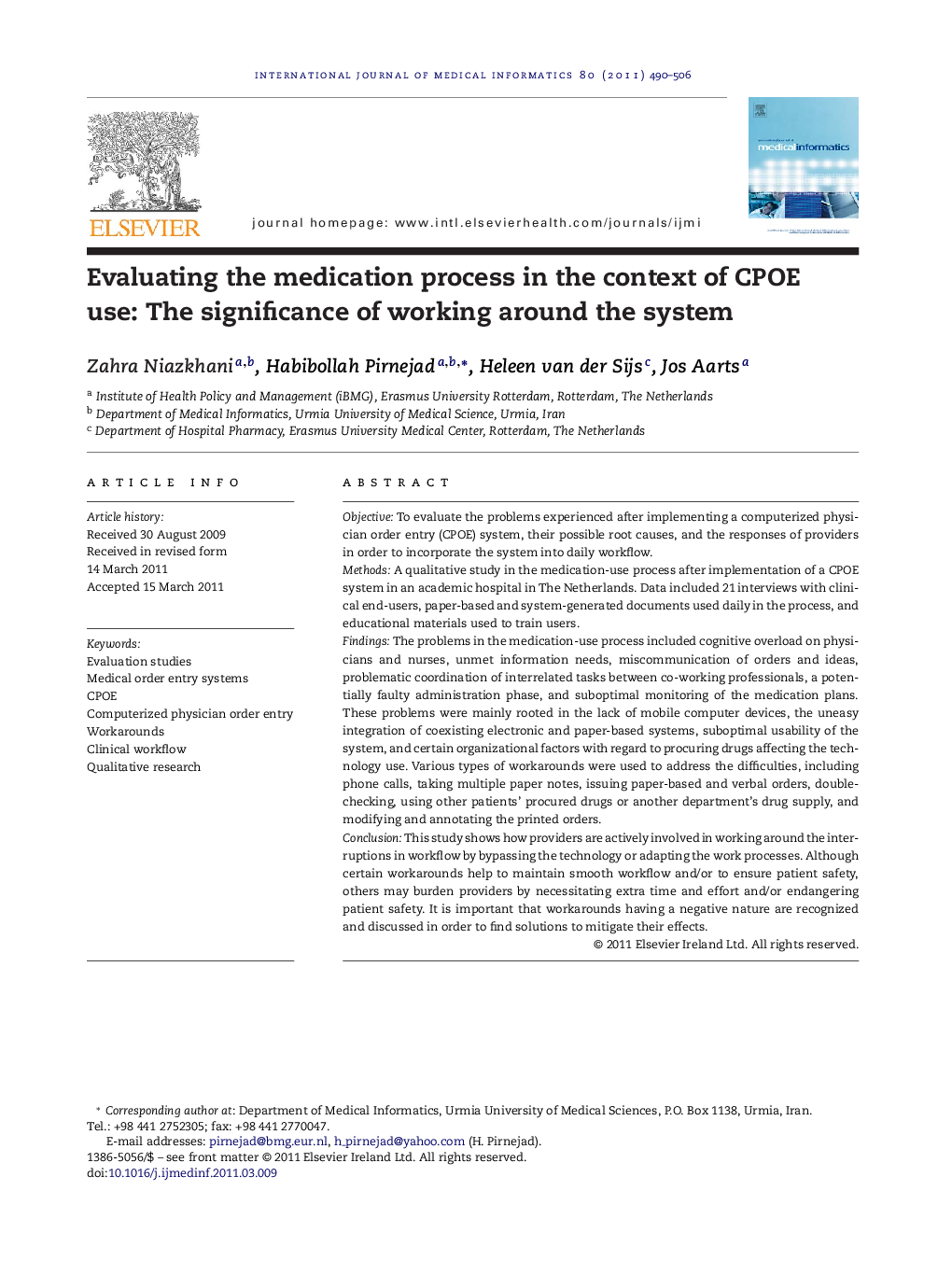| Article ID | Journal | Published Year | Pages | File Type |
|---|---|---|---|---|
| 516248 | International Journal of Medical Informatics | 2011 | 17 Pages |
ObjectiveTo evaluate the problems experienced after implementing a computerized physician order entry (CPOE) system, their possible root causes, and the responses of providers in order to incorporate the system into daily workflow.MethodsA qualitative study in the medication-use process after implementation of a CPOE system in an academic hospital in The Netherlands. Data included 21 interviews with clinical end-users, paper-based and system-generated documents used daily in the process, and educational materials used to train users.FindingsThe problems in the medication-use process included cognitive overload on physicians and nurses, unmet information needs, miscommunication of orders and ideas, problematic coordination of interrelated tasks between co-working professionals, a potentially faulty administration phase, and suboptimal monitoring of the medication plans. These problems were mainly rooted in the lack of mobile computer devices, the uneasy integration of coexisting electronic and paper-based systems, suboptimal usability of the system, and certain organizational factors with regard to procuring drugs affecting the technology use. Various types of workarounds were used to address the difficulties, including phone calls, taking multiple paper notes, issuing paper-based and verbal orders, double-checking, using other patients’ procured drugs or another department's drug supply, and modifying and annotating the printed orders.ConclusionThis study shows how providers are actively involved in working around the interruptions in workflow by bypassing the technology or adapting the work processes. Although certain workarounds help to maintain smooth workflow and/or to ensure patient safety, others may burden providers by necessitating extra time and effort and/or endangering patient safety. It is important that workarounds having a negative nature are recognized and discussed in order to find solutions to mitigate their effects.
► Comprehensive study of workarounds can help improving post-CPOE workflow. ► Sociotechnical and organizational factors’ linkage aids workaround generation. ► The situatedness of workarounds helps users to tackle local workflow obstacles. ► CPOE orders do not mean that the paper or verbal orders are not used any more. ► Coordinators with an overview on the entire process can foster a balanced workflow.
